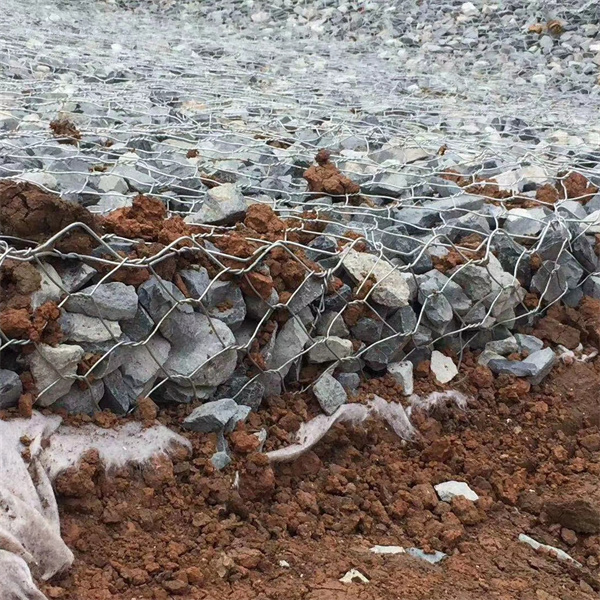okt . 18, 2024 14:58 Back to list
china construction gabion
The Rise of Gabion Structures in China’s Construction Sector
In recent years, China has witnessed a surge in the utilization of gabion structures within its construction industry. Gabions, which are wire mesh containers filled with stones, rocks, or other materials, have become increasingly popular due to their versatility, sustainability, and cost-effectiveness.
What Are Gabions?
Gabions have been used for centuries, primarily in erosion control, flood prevention, and landscape enhancement. Traditionally, these structures were made from natural materials, but in modern construction, they are typically made of steel wire mesh or polymer-coated wire for increased durability. Filled with a variety of materials, these cages can be used in numerous applications, ranging from retaining walls to aesthetic landscaping features.
The Advantages of Gabion Structures
1. Environmental Sustainability One of the most significant advantages of gabions is their minimal environmental impact. They are often filled with locally sourced materials, which reduces the carbon footprint associated with transportation. Furthermore, they allow for proper drainage, preventing water accumulation and subsequent erosion.
2. Cost-Effectiveness Compared to traditional building materials, gabions are substantially cheaper. Their ease of installation reduces labor costs, and the availability of fill materials also contributes to lower overall expenses.
3. Flexibility and Adaptability Gabion structures can be constructed in various shapes and sizes, making them suitable for diverse applications in urban and rural settings alike. From simple barriers to complex landscaping designs, their versatility is unrivaled.
4. Aesthetic Appeal Beyond their functional benefits, gabions can enhance the visual appeal of a landscape. With their ability to incorporate a variety of fill materials, including natural stones and colored rocks, they can be designed to blend seamlessly with the surrounding environment.
Applications in Chinese Construction
china construction gabion

In China, the construction sector has embraced gabions for diverse projects. From highways and railways to urban landscaping, gabions have found their place in enhancing infrastructure and managing natural resources effectively.
- Erosion Control In regions with significant rainfall and river flow variations, gabions are often used to stabilize banks and prevent erosion. They are particularly effective in mountainous areas where steep slopes are prone to landslides. The flexibility of gabion structures allows them to adapt to the natural contours of the land, effectively preventing further degradation.
- Flood Management Gabions are employed in flood-prone areas as temporary barriers to redirect water flow and protect properties. Their ability to absorb water and reduce the velocity of flowing water makes them an excellent tool for flood mitigation.
- Urban Development As cities in China expand, gabions are increasingly utilized in urban landscaping projects. They create aesthetically pleasing features in parks, walkways, and public spaces while providing structural support and erosion control.
Looking Ahead The Future of Gabions
The future of gabion structures in China looks promising. With a growing emphasis on sustainable development, alternative building methods like gabions are likely to gain further traction. They align well with the principles of green building and sustainable urban planning.
As environmental challenges continue to escalate, the necessity for adaptive and resilient construction methods becomes evident. Gabions not only offer practical solutions for current infrastructural needs but also contribute to the aesthetic and ecological values of the environment.
Conclusion
In conclusion, the rise of gabion structures in China's construction sector reflects a significant shift towards more sustainable and adaptable building practices. Their numerous advantages make them an attractive option for a variety of applications, ensuring they remain an integral part of the industry’s future. As China continues to develop and modernize, the adoption and innovation surrounding gabions could play a crucial role in creating resilient infrastructure capable of withstanding the challenges of a changing environment.
-
HESCO Gabion Baskets for Coastal Erosion Prevention
NewsAug.22,2025
-
Longevity and Durability of River Rock Gabion Walls
NewsAug.22,2025
-
How to Integrate Gabion 3D Walls in Urban Planning
NewsAug.22,2025
-
Reno Mattress Gabion Applications in Civil Engineering
NewsAug.22,2025
-
How to Install Wire Mesh for Gabion Baskets Properly
NewsAug.22,2025
-
Best Materials for Filling a Chain Link Gabion
NewsAug.22,2025
-
Wire Mesh Thickness Impact on Gabion Wall Load Bearing
NewsAug.12,2025






